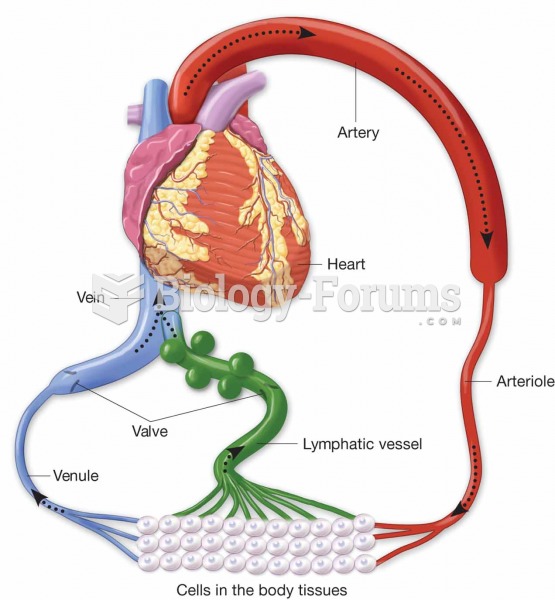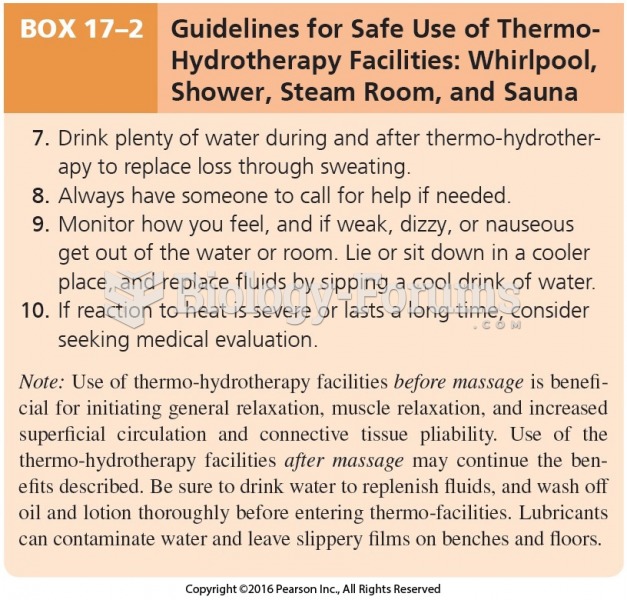|
|
|
The most dangerous mercury compound, dimethyl mercury, is so toxic that even a few microliters spilled on the skin can cause death. Mercury has been shown to accumulate in higher amounts in the following types of fish than other types: swordfish, shark, mackerel, tilefish, crab, and tuna.
The first successful kidney transplant was performed in 1954 and occurred in Boston. A kidney from an identical twin was transplanted into his dying brother's body and was not rejected because it did not appear foreign to his body.
Between 1999 and 2012, American adults with high total cholesterol decreased from 18.3% to 12.9%
This year, an estimated 1.4 million Americans will have a new or recurrent heart attack.
Glaucoma is a leading cause of blindness. As of yet, there is no cure. Everyone is at risk, and there may be no warning signs. It is six to eight times more common in African Americans than in whites. The best and most effective way to detect glaucoma is to receive a dilated eye examination.
 Lymphatic vessels pick up excess tissue fluid, purify it in the lymph nodes, and then return it to t
Lymphatic vessels pick up excess tissue fluid, purify it in the lymph nodes, and then return it to t
 Urea (diesel exhaust fluid) injection is used to reduce NOx exhaust emissions. It is injected after ...
Urea (diesel exhaust fluid) injection is used to reduce NOx exhaust emissions. It is injected after ...
 Guidelines for Safe Use of Thermo- Hydrotherapy Facilities: Whirlpool, Shower, Steam Room, and Sauna ...
Guidelines for Safe Use of Thermo- Hydrotherapy Facilities: Whirlpool, Shower, Steam Room, and Sauna ...




